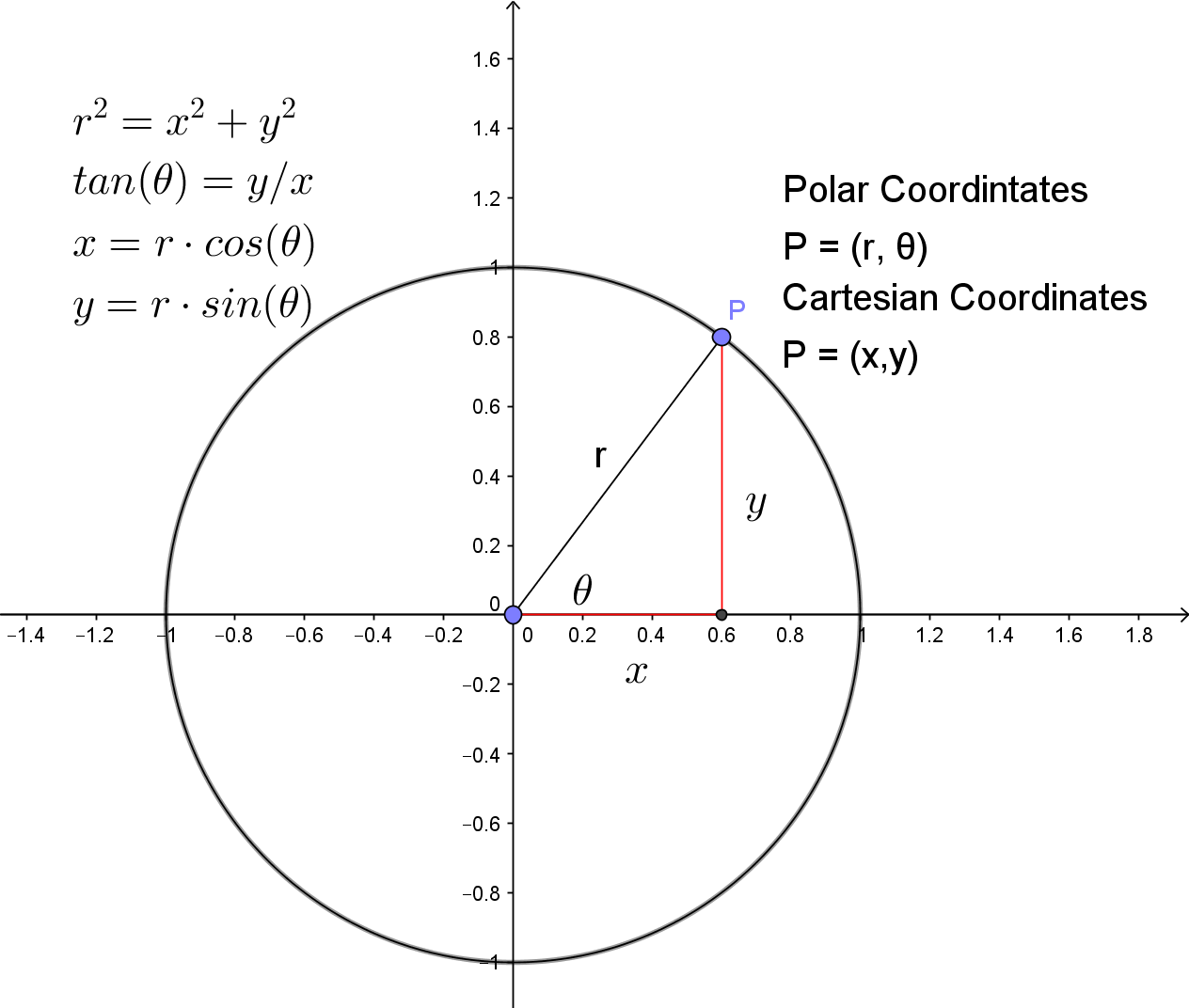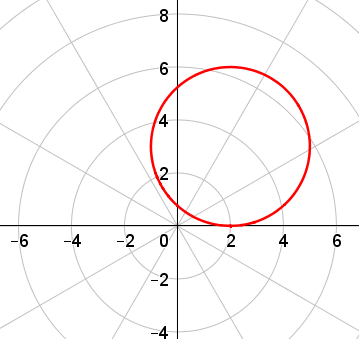Cartesian to Polar Conversionr
By using the theorem of Pythagoras, we can convert between Polar Coordinates and Cartesian Coordinates. Going from Cartesian to Polar is really quite simple, provided we do not need or desire algebraically simplified equations. All we have to do is take the Cartesian equation in $x$ and $y$ and substitute $r\cdot cos(\theta)$ and $r\cdot sin(\theta)$ for every instance of $x$ and $y$ respectively. Look at the conversion formula in figure 1. There, a single point, $P$, has been graphed with coordinates given in both systems. By constructing the Pythagorean triangle, one can understand how to convert from Cartesian to Polar. Converting in the other direction, from Polar to Cartesian may require solving for $r$ and $\theta$, although in many instances, the $r\cdot cos(\theta)$ or $r^{2}$ terms may just appear in the equation and substitutions can be made directly.

Answer: Substitute $x=r\cos\theta$ and $y=r\sin\theta$. We will see that $\theta$ is about to cancel out!$$ r^{2}\cos^{2}\theta+r^{2}\sin^{2}\theta=r^{2}$$ $$r^{2}(\cos^{2}\theta+\sin^{2}\theta)=r^{2}$$ $$r^{2}\cdot1=r^{2}$$ $$r=r$$ So for a circle centered at the origin, when plotting in pure polar coordinates, there is no dependence on $\theta$. At any $\theta$ (and for all $\theta$), each point on the circle is at distance $r$. If the radius were $2$, then the equation would be $r=2$.
{Aside: A very basic trig identity is $\cos^{2}\theta+\sin^{2}\theta=1$}

Answer: Do the substitution.$$\left(r\cos\theta-2\right)^{2}+\left(r\sin\theta-3\right)^{2}=9.$$ Clearly this is going to be algebraically messy, but it can be solved for $r$ in terms of $\theta$ to get: $$r=2\cos\theta+3\sin\theta\pm\sqrt{4\cos^{2}\theta+12\cos\theta\sin\theta+9\sin^{2}\theta-4}$$ The plus or minus is not relevant, as it just determines the starting point going all the way around the circle, so we can use either plus or minus. We can see this graphed in polar coordinates in figure 2.